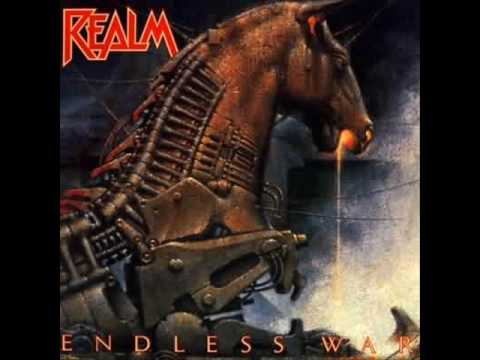Cover: Sublime (Renamed: Doin’ Time) Original: George Gershwin’s Opera “Porgy and Bess” When one thinks of Sublime’s punky-ska feel, the word “opera” doesn’t immediately jump to mind. However, this strange combination provided Brad Nowell with the inspiration to cover the classical George Gershwin opera “Porgy and Bess.” While this is not a cover in the strictest sense of the word, Sublime’s version relies heavily on Herbie Mann’s rendition of Gershwin’s song and also retains the memorable opening lines, “Summertime, and the livin’s easy.” Interesting Fact: The lyrics for the Sublime song originally began, “Doin’ Time, and the livin’ easy,” but after a small legal scuffle, the lyrics had to be changed in order to use Gershwin’s original melody. Unfortunately, lead singer Brad Nowell died before the song could be re-recorded. As a result, producer Michael Happoldt opens the song despite never singing for Sublime before or after.
Original: Corey Hart Cover: The Federation Generally, when one thinks of Canadian musicians these days, Michael Buble comes to mind. 20+ years ago, Corey Hart would have been the best thing out of Canada for music lovers. However, no matter whom you ask, Canadian New Wave music is almost never going to make someone think of West Coast Hip-Hop. But, The Federation saw the possibility for that connection, thought it high time for a Corey Hart revival, and in 2006, they released their version of “I Wear My Sunglasses at Night,” appropriately titled, “I Wear My Stunna Glasses at Night.”
Original: Nancy Sinatra Cover: Megadeth Megadeth’s lyrics are often related to death, war, addiction and other politically-charged topics. So it came as a surprise to everyone when Nancy Sinatra’s sassy declaration of female independence showed up on a new heavy metal band’s debut album. With a few tweaks of the lyrics and a 180 in instrumentation, Sinatra’s playful tune became what Lee Hazelwood called “a perversion of the original”, and “vile and offensive.” Apparently Megadeth fans and Sinatra fans have at least some common ground, as the album on which this song appeared received overall favorable reviews.
Original: Modern English/ The Cure Cover: Jason Mraz/ 311 I have combined these songs because of the similarity in the way they are covered. Both songs come from similar English rock bands. Granted, when I say similar, I mean that they are both English, and can both, at some point in their careers, be put into the New Wave/ Post-Punk categories. However, neither the New Wave influenced sound of “I Melt With You” or the gothic rock (yes, that’s a thing) of the Cure’s “Lovesong” seem like they would appeal to alternative musician Jason Mraz or the reggae-funk stylings of 311, respectively. Both artists covered their songs for the 2004 movie “50 First Dates,” which features almost exclusively 80’s covers in the style of ska or reggae.
Original: The Beatles Cover: Realm The British Invasion sparked a huge influx of rock bands into popular culture and with all these new bands came all their new fans. Fans, in the music industry, means success. It seemed like these Brits held the key to outrageous fortune, and many bands that came from that era remain very popular to this day. Realm proves for us that it wasn’t just the lyrics that captured the hearts and ears of millions. Keeping only the classic words, Realm tried their hand at reproducing a song by The Beatles in their own speed metal way. I’m afraid my bias is showing through here, but I hope you will agree: this is one song that shouldn’t have tried crossing over.
Cover: Amy Winehouse Original: James Moody (original solo); King Pleasure (first lyrics) Although Eddie Jefferson is credited with first putting lyrics to the famous James Moody solo, King Pleasure’s name goes down as the artist who first recorded the song. This song represents the first true example of “vocalese,” a style of jazz singing in which words are put to instrumental parts. Being born of the influence of men so deeply rooted in jazz, the song is certainly striking when turned into the laid-back reggae version, as performed by Amy Winehouse.
Original: Snoop Dogg Cover: The Gourds Snoop Dogg’s influence can be felt around the popular world. He has a huge number of hits, has connections with Dr. Dre (an honorable mention to this list), and has become a spokesman for everything from decorated headphones to marijuana use. Mr. Dogg has also made numerous appearances in the film world (both in the realms of Hollywood and more adult-oriented entertainment). The Gourds have not. However, for the small bluegrass band from Texas, the relevance of Snoop’s autobiographical rap was too perfect not to cover. For a genre generally known for its talented lyricists, it certainly is a new experience to hear these country men singing about the difficulties of being Snoop D-O-Double G.
Original: Britney Spears Cover: Children of Bodom Watch this video on YouTube What has become the unfortunately appropriate theme song for the once pop-superstar’s life, “Oops, I Did It Again” cemented Britney Spears as the cultural icon of the pop music industry of the Nineties. The song broke the Top Ten on the Billboard Hot 100 and received various awards for the hundreds of thousands of copies that it sold across the world. Naturally, this enormous success was alluring to a Finnish melodic death metal band looking to break out into the world stage. Although it was some years until the song was released on a full length CD, COB’s cover saw plenty of air-time on the Japanese release of their album “Are You Dead Yet?”
Original: Nirvana Cover: Paul Anka Nirvana’s grungy, alternative sound lends itself perfectly to the early nineties teen anthem. Harsh, distorted guitars, unintelligible lyrics and the generally dirty look of the music video all came together in a uniquely satisfying way. The song makes you want to rise up against the oppressive system and exert your independence. At least, it does when Nirvana plays it. Paul Anka’s swingin’ version of the song just makes you feel a little uncomfortable. It might be his deep, fake tan or obviously uncomfortable demeanor up on stage (his exchange with the audience at the beginning of the video demonstrates this), but something about a nearly 70 year old man crooning out what should be a grunge-rock anthem of unbearable teen angst just doesn’t seem right.
Original: Francis Scott Key (Words); John Stafford Smith (Music) Cover: Jimi Hendrix The Star Spangled Banner, as it is known today, is the first stanza of a longer poem written by Francis Scott Key during the War of 1812, and it is accompanied by Smith’s “The Anacreontic Song.” It was adopted as the official anthem of the United States in 1931. When one considers the true origins of the song, Jimi Hendrix’s sui generis (well put, Wikipedia) performance of the US anthem at the Woodstock Music & Art Fair, in 1969, instantly becomes even more memorable. There isn’t much that can be said on this performance that the performance itself doesn’t do a better job of showing.
























